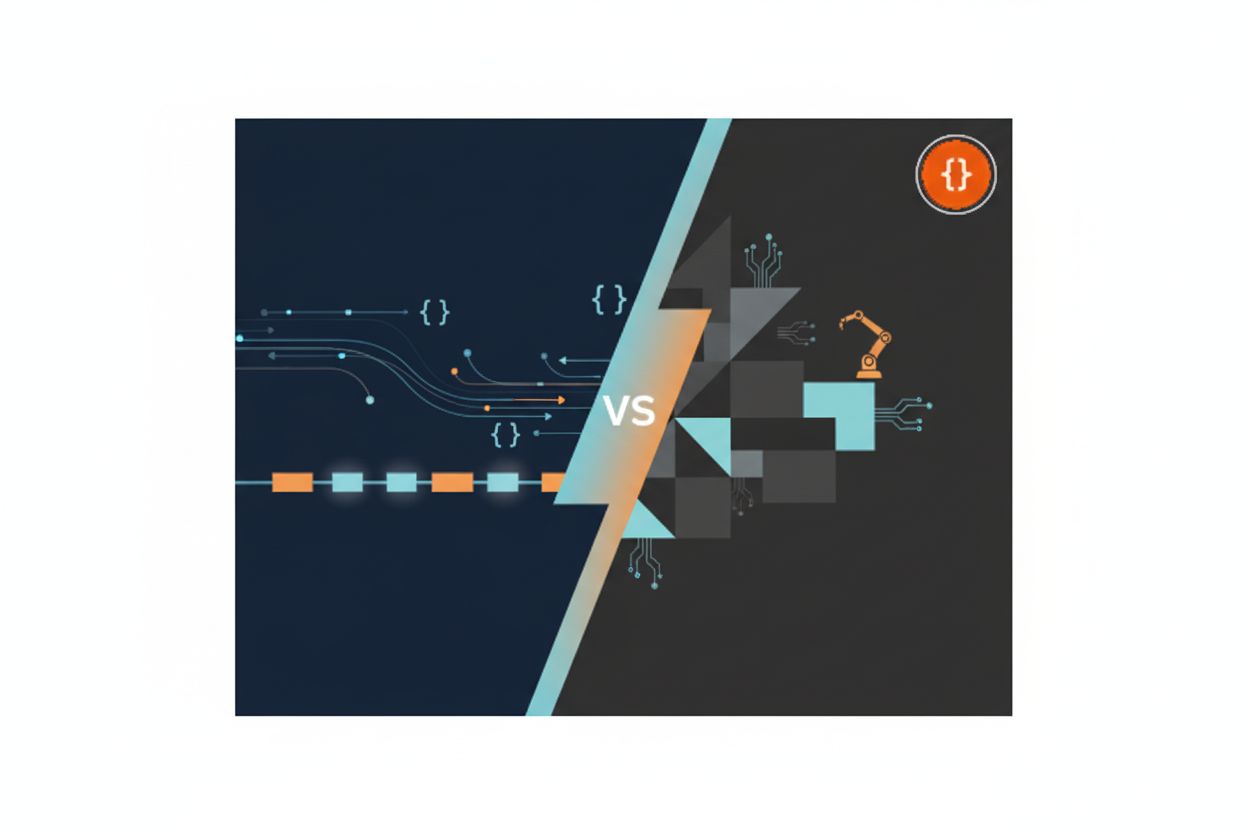API Contract Testing Demystified A Practical Guide
TL;DR
API Contract Testing Demystified: A Practical Guide
Understanding API Contract Testing
Alright, let's dive into api contract testing. Ever had a disagreement so bad it broke something? That's kinda what happens when apis don't see eye-to-eye.
Api contract testing is all about making sure two services, like, your frontend and backend, actually agree on how to talk to each other. It's not just hoping for the best, it's verifying it.
- It validates the interactions between services. Think of it as checking the handshake before the full conversation starts.
- A predefined contract, like an OpenAPI spec, is crucial. This contract spells out exactly what's expected. We can see on Sauce Labs Documentation that the contract is generally presented as a specification file such as OpenAPI.
- It ensures compatibility. The consumer (client) and producer (server) both stick to the rules.
So, it ain't about the internal workings of each service; it's about that clean, agreed-upon data exchange. It's especially useful in microservices where things are constantly changing. According to Testfully, api contract testing is essential to modern software development, especially in systems employing microservices or distributed architectures.
Now, let's see how contract testing stacks up against traditional api testing.
Why API Contract Testing Matters
Alright, so why should you really care about api contract testing? It's more than just some fancy testing buzzword, trust me.
- First off, compatibility is king. Think about it: if your payment service suddenly starts sending dates in a different format, your invoicing system is gonna have a bad time. Contract testing nips these issues in the bud.
- Next up, faster feedback. Instead of waiting for full integration tests to fail, you'll catch contract violations early, according to Testfully, api contract testing helps in early stages.
- Plus, it makes scaling way easier. When each service sticks to its contract, you can scale 'em independently without fear of breaking everything.
So, by validating that api producer and consumer are respecting the contract, which is generally presented as a specification file such as OpenAPI as we can see on Sauce Labs Documentation, you're heading in the right direction. Now, let's consider when you should be using contract testing.
Best Practices for Effective API Contract Testing
Alright, wanna make sure your api contract tests are actually worth something? It's more than just running a script and hoping for the best, ya know?
- Define clear and comprehensive api contracts. This is your foundation. Think about a payment service; you gotta spell out the formats for different payment methods and what success or error responses look like.
- Maintain contract versioning for backward compatibility. APIs evolve, right? If version 1.0 supports only JSON, but 2.0 adds XML, keep both versions so older clients don't break. Common strategies include URL versioning (e.g.,
/api/v1/users) or header versioning (e.g.,Accept: application/vnd.myapp.v1+json). This ensures that older clients can continue to use the API without issues while new versions are introduced. - Automate the testing process for continuous integration. Integrate contract testing into your CI/CD pipeline so you always have that quick feedback loop, as testrigor.com notes.
For instance, if a healthcare provider updates their api for patient records, the contract needs updating too.
Well, now that we've got the basics down, let's talk about tooling.
Implementing API Contract Testing
Implementing api contract testing can seem daunting, but it's really about setting up a solid process. Let's break it down, shall we?
- Planning phase: This is where you define team roles. Who's doing what? You also need to figure out your mocking strategies. How you're gonna simulate interactions between services?
- Documenting the contract: It's crucial to use specifications and standards. Think OpenAPI or similar. Get everything in writing, so there's no confusion. As Sauce Labs Documentation notes, the contract is generally presented as a specification file such as OpenAPI.
- Tool selection criteria: Not all tools are created equal. Focus on ease of use and the feature set. Does it fit your team's skill level and the complexity of your apis? According to testsigma, a tool should be easy to be understood by people of varying expertise across the teams. Popular tools include Pact, Swagger/OpenAPI tooling, and platforms like Testfully and TestRigor. Key features to look for are support for your tech stack, integration with CI/CD, clear reporting, and schema validation capabilities.
- Validation and confirmation: Finally, you gotta validate and confirm your api results. Make sure everything's jiving as expected. This step ensures both sides of the contract are holding up their end of the bargain.
Let's look at a practical example using the Rick and Morty api with Testfully.
Validating the Characters Endpoint using Testfully
This is a great way to see contract testing in action.
Setting up a new request:
- Log in to your Testfully account.
- Navigate to the "Tests" section and click "Create New Test".
- Choose "API Test" and give it a name like "Rick and Morty Characters Contract Test".
- In the "Request" tab, set the HTTP method to
GET. - Enter the URL:
https://rickandmortyapi.com/api/character.
(Imagine a screenshot here showing the Testfully UI with the GET request to the URL populated.)
Applying schema validation rules to the response body:
Go to the "Assertions" tab.
Click "Add Assertion" and select "Schema Validation".
Testfully will likely make a sample call to the endpoint to fetch the response structure. You can then either:
- Generate a schema: Testfully might offer a button to "Generate Schema from Response". Click this to create a JSON schema based on the actual response.
- Manually define schema: You can also manually define your expected schema. For the Rick and Morty characters endpoint, you might expect a structure like this:
{ "info": { "count": "number", "pages": "number", "next": "string | null", "prev": "string | null" }, "results": [ { "id": "number", "name": "string", "status": "string", "species": "string", "type": "string", "gender": "string", "origin": { "name": "string", "url": "string" }, "location": { "name": "string", "url": "string" }, "image": "string", "url": "string", "created": "string" } ] }You would input this JSON schema into the schema validation field in Testfully.
(Imagine a screenshot here showing the Testfully assertions tab with a schema validation rule configured.)
Executing the test and observing the validation results:
- Click the "Run Test" button.
- Testfully will execute the GET request and compare the actual response against the defined schema.
- If the test passes: You'll see a success message, indicating that the API's response structure matches your contract.
- If the test fails: Testfully will highlight the discrepancies, showing you exactly where the response deviates from the expected schema (e.g., a missing field, an incorrect data type). This is your early warning system!
(Imagine a screenshot here showing Testfully results, either passing or failing with specific error details.)
So, with a solid plan and the right tools, you can get contract testing up and running pretty smoothly. Next up, let's dive into more real-world examples.
Challenges and Limitations
API contract testing isn't a silver bullet, ya know? There's some hurdles you gotta jump.
- Defining comprehensive contracts is tricky. What happens if you miss an edge case? Like, in healthcare, if you forget to specify how an api handles a rare blood type, you're gonna have problems.
- Maintaining relevancy when apis change can be a pain. if a retail api adds a new product attribute, like "eco-friendly," you gotta update the contract, or things break.
- Don't forget communication! Ensuring developers and testers are on the same page is key, according to Testfully. To improve this, consider regular sync-up meetings between dev and QA teams to discuss API changes and contract updates, and utilize shared documentation platforms (like Confluence or a wiki) where API contracts and their evolution are clearly documented and accessible to everyone.
So, it's not perfect, but it's still pretty darn useful.
Conclusion
API contract testing, it's like making sure everyone's on the same page before the party starts, right? Let's wrap this up.
- Accurate contracts: core. If they're not spot-on, things can get messy real fast. Like, a financial api needs to precisely define transaction structures; otherwise, payments go haywire.
- Adaptability is key, folks. As apis change, contracts gotta keep up. testrigor.com notes to use version control for api contracts.
- Balance your testing. Contract testing is awesome, but don't forget other types, too.
- Teamwork makes the dream work, as Testfully said. Everyone needs to agree on how the api behaves.
- Tools like Testfully? Huge help. They streamline the process, making it easier to manage and automate.
So, contract testing isn't just a nice-to-have; it's essential for reliable apis. If you're looking to get started, try setting up a simple contract test with a public API like the Rick and Morty one using a tool like Testfully.









